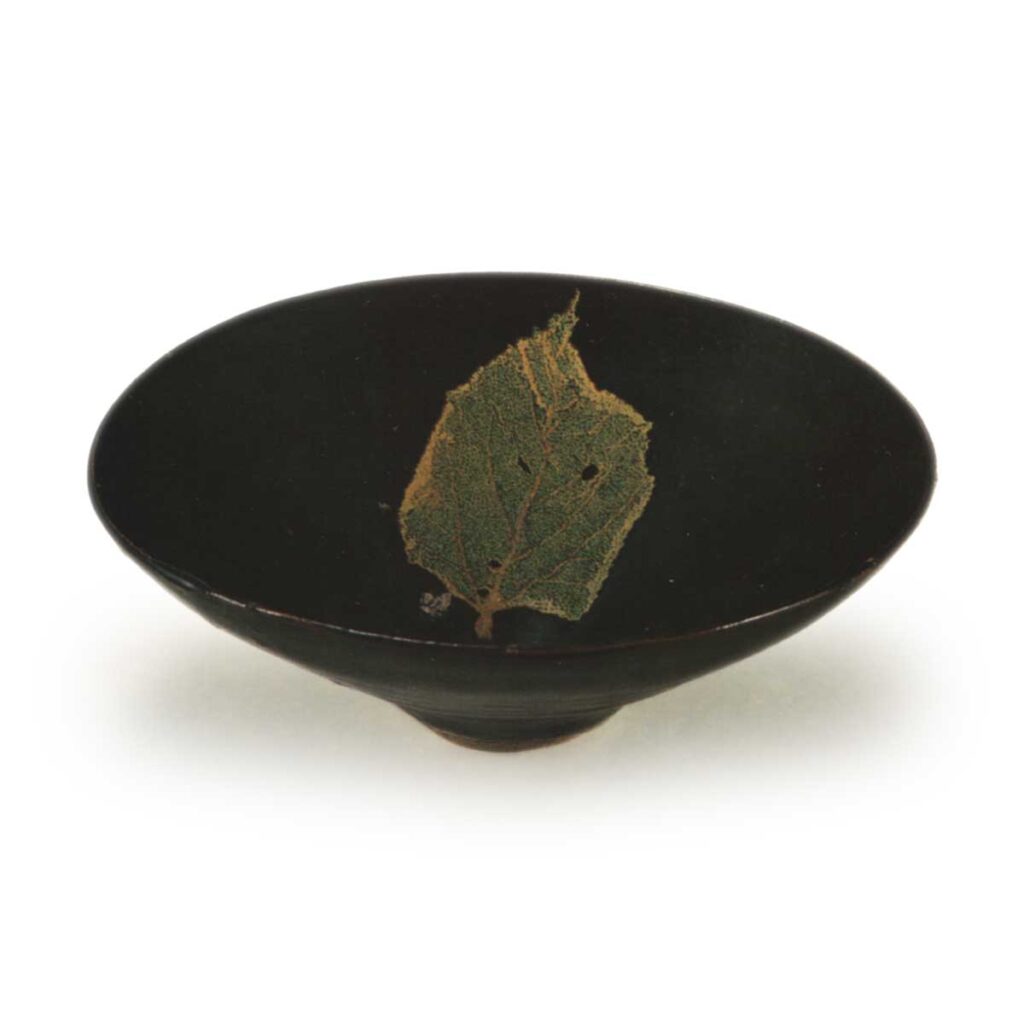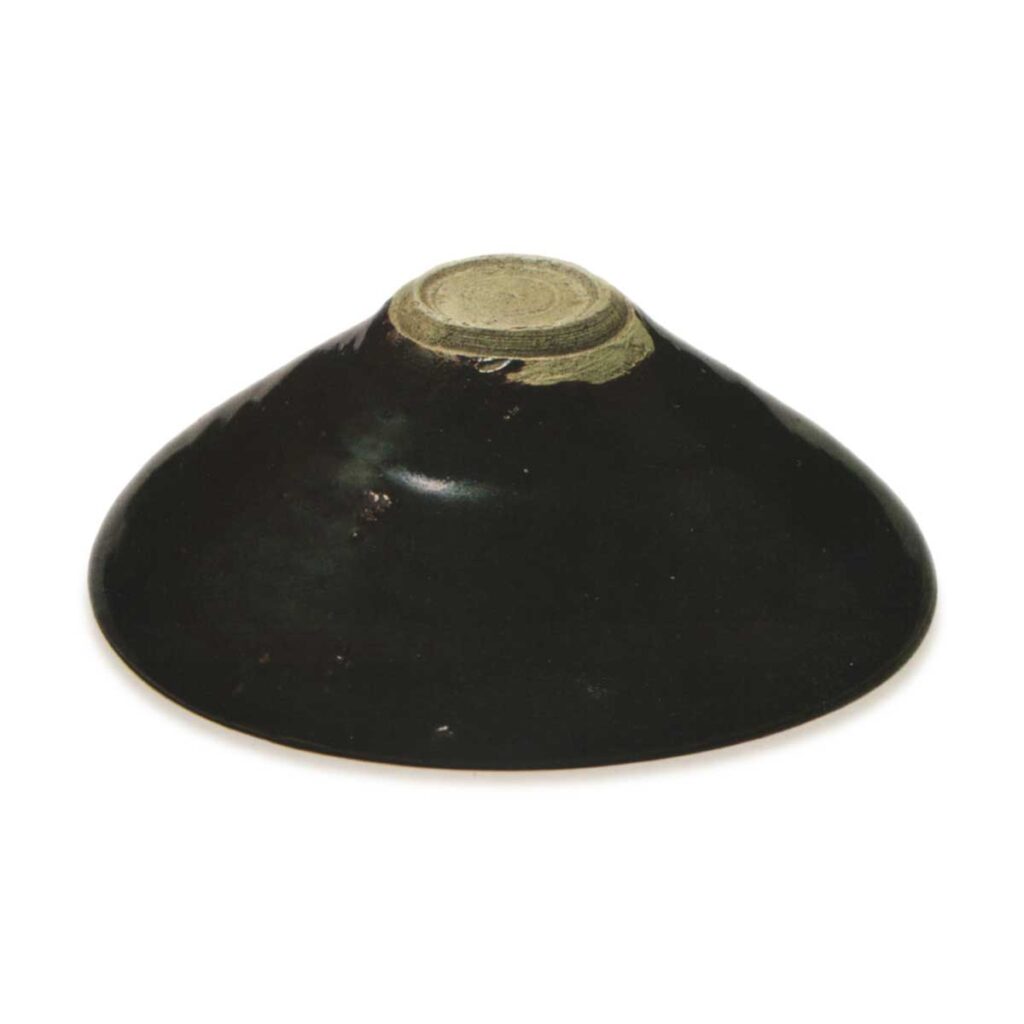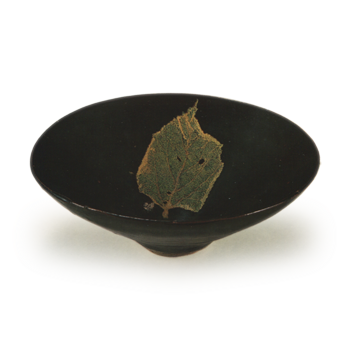

Important Cultural Property
Height: 5.1-5.3cm
Mouth diameter: 14.7-14.9cm
Outer diameter of base: 3.3 cm
Height of same: 0.4 cm
The Kichu potter, who used subtle glaze techniques to add a new twist to the sengamigata pattern, also succeeded in a new innovation, the kiba tenmoku, in which real leaves are burned into the surface of the vessel. The idea probably came during the application of sengami die-cutting, but the pattern was blackened in an ash glaze in the style of sea squirt, whereas this method uses the leaves of a tree on a black background, with a yellowish color. This fascinating technique has recently been tried in Japan in various ways. The usual theory is that it can be done by simply pasting a leaf onto a black glaze and firing it. Since the leaves turn to ash during the kiln, they naturally form a glaze and the shape of the leaves may appear as it is, but this alone is not enough to produce a brilliant effect. Another method involves applying a yellow glaze to leaves and firing the glazed leaves, and another method involves dipping leaves that have been corroded to form a fine mesh with only veins in a yellow glaze, firing the glazed leaves, and firing the glazed leaves. However, none of these techniques have yet to produce the same true-to-life leaf patterns as Jizhou ware. New Chinese scholars have suggested that the yellow glaze was applied only to the leaves on the base, corroded leaves with only the veins were pasted on top, black glaze was applied, the leaves were removed, the mold was left, and then the ware was fired.
The Mokuba Tenmoku shown here is a famous bowl inherited from the Maeda family of Kaga, and is considered to be the most exquisite of its kind in terms of delicacy, vividness, and its true-to-life effect. The base is of a light yellowish-white color, as is customary, and the bowl has been carefully and carelessly chiseled with an experienced potter’s wheel. The base of the bowl is also cut out in small pieces, as is usual, and only this part of the bowl has been turned into an earthenware base. The sharply cut spatula at the edge of the base shows the exact mark. This flat bowl is thin and of good dimensions for a tortoiseshell cover. The black glaze is a deep purplish blackish-brown glaze, known in China as “ointment black” or “soy sauce color. In the prospect of this black glaze, both inside and out, a leaf of a tree is attached in a perfect position, both in shape and size. The veins of the thin, half-transparent, delicate leaf show an extremely dense mixture of blue, green, yellow, and white on the black background, which is nothing short of exquisite, The detailed design of nature is truly mysterious. There is probably no other ceramic technique that has been able to capture such a natural and delicate beauty of nature so vividly.
Attachments. The thin, elegant gold cover ring was previously attached, but has now been removed and is now included with the bowl. However, the description on the box reads “Shichu fukurin hiracha-bowl.
Conveyance. The Kaga Maeda family inherited many famous Tenmoku bowls, of which this is one of the most fascinating. Currently in the possession of a family in Kyoto.



